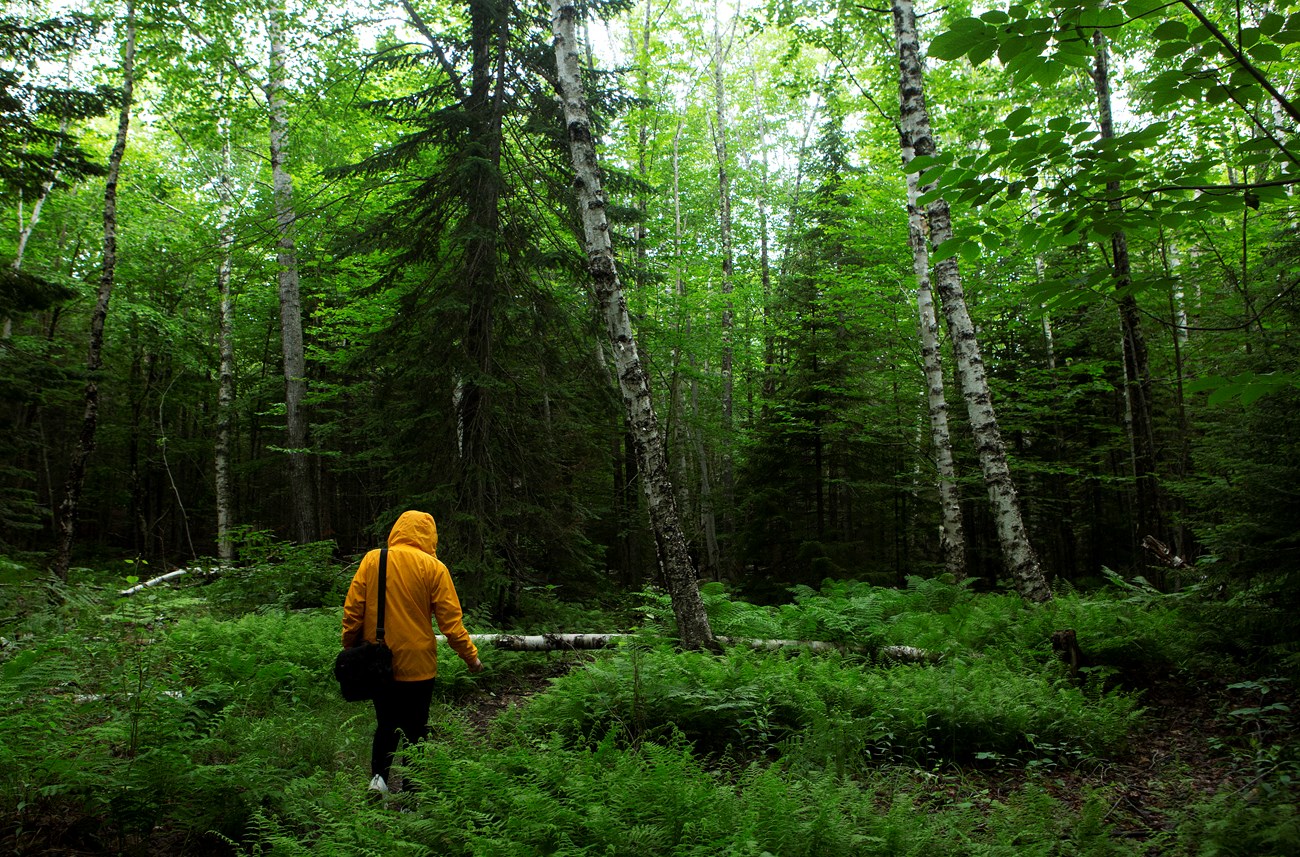Last updated: May 19, 2025
Article
Research Brief: Tracking Understory Conditions to Predict Forest Futures

Photo by Ashley L. Conti, Friends of Acadia
“Temperatures on the coast are warming faster than interior Maine, so we expect red spruce to lose habitat on the coast quicker,” according to University of Maine doctoral student Colby Bosley-Smith. “Some climate models have shown that it won’t have habitat in the next fifty years — which is hard to believe, because if you go to coastal spruce forests now, they seem to be thriving.”
Such a change could have extensive ripple effects, she added. The park’s extensive cover of dense evergreens provides year-round shade that helps red spruce continue to grow, in addition to providing wildlife habitat. “It’s a pretty unique forest structure,” Bosley-Smith said. “There are no other tree species in Maine that could replace the functional role of spruce should conditions become too warm or dry.”
Anticipating the challenges facing the next generation of trees means examining the understory — because the real indicators of a forest’s future health lie in how it regenerates. Bosley-Smith, a 2025 Acadia Science Fellow, plans to set up 60 sensors throughout the park to monitor microclimate, the particular conditions underneath the forest canopy that affect tree seedlings and saplings. Over the course of three years, the sensors will record soil moisture and temperature, and air temperature and relative humidity. Additional data will come from the Northeast Temperate Network, a National Park Service program of long-term monitoring of forest health at 176 sites at Acadia.
In analyzing the data, Bosley-Smith will look for signs of mismatch between the understory and the mature trees growing in the overstory, which occur when disturbances, such as forest fragmentation, lead to a long-term shift in the kinds of species that dominate a forest ecosystem. “I don't actually expect to find that many places in the park right now where there's a high amount of compositional mismatch,” Bosley-Smith explained. “It's more about identifying which places in the park are likely to be vulnerable.”
Matching up these sources will illustrate how present conditions affect the trees that succeed or fail, enabling more finely-tuned predictions on what today’s climate means for tomorrow’s forests. That will also add to the work of previous Second Century Stewardship Fellow Jay Wason and graduate student Camilla Seirup, who studied sixty years of change in Acadia’s red spruce forests.
